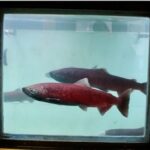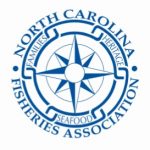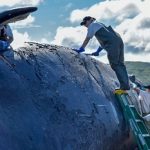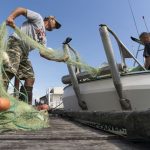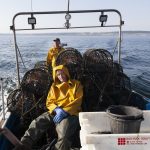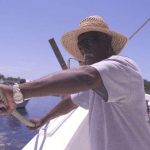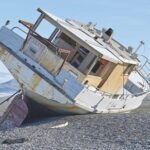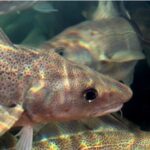Tag Archives: haddock
Scots fishers feeling chipper over more haddock
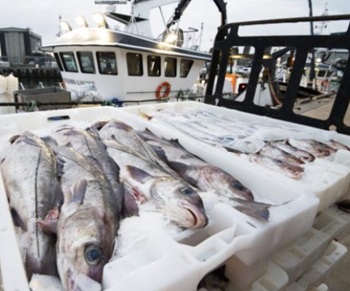 Scots fishers have access to more haddock, the mainstay of fish suppers north of the border, following an international deal on quotas. It remains to be seen whether it will mean cheaper fish and chips. But more haddock is undoubtedly a boost for the supply chain, including fish friers. The agreement between the UK and Faroe was today hailed as the “final piece of the jigsaw” for the Scottish catch sector in 2024. Britain secured a total of more than 2,200 tonnes of extra fish quota in the bilateral talks. Scottish fishing vessels, including many based in the north-east, now have greater access to several key stocks. According to the UK Government, it is another example of what can be achieved from “post-Brexit freedoms”. Photos, more, >>click to read<< 16:27
Scots fishers have access to more haddock, the mainstay of fish suppers north of the border, following an international deal on quotas. It remains to be seen whether it will mean cheaper fish and chips. But more haddock is undoubtedly a boost for the supply chain, including fish friers. The agreement between the UK and Faroe was today hailed as the “final piece of the jigsaw” for the Scottish catch sector in 2024. Britain secured a total of more than 2,200 tonnes of extra fish quota in the bilateral talks. Scottish fishing vessels, including many based in the north-east, now have greater access to several key stocks. According to the UK Government, it is another example of what can be achieved from “post-Brexit freedoms”. Photos, more, >>click to read<< 16:27
Encouraging results from inshore fish survey
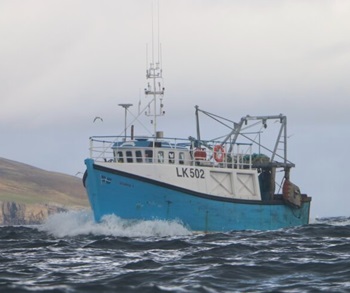 Survey catches of cod in the inshore waters around Shetland last year were at their best for five years, fishing leaders say. The record squid catch rate observed in inshore waters in 2022 was also surpassed, according to scientists from UHI Shetland. This has led to suggestion that there is a growing opportunity to diversify into a targeted squid fishery – although this may need government support. Shetland Fishermen’s Association executive officer Daniel Lawson said: “Given how important inshore waters are to the Shetland fisheries ecosystem, and how vital it is for the future of fishing that nursery grounds show healthy amounts and sizes of young fish, these are encouraging results, particularly for cod. more, >>click to read<< 11:09
Survey catches of cod in the inshore waters around Shetland last year were at their best for five years, fishing leaders say. The record squid catch rate observed in inshore waters in 2022 was also surpassed, according to scientists from UHI Shetland. This has led to suggestion that there is a growing opportunity to diversify into a targeted squid fishery – although this may need government support. Shetland Fishermen’s Association executive officer Daniel Lawson said: “Given how important inshore waters are to the Shetland fisheries ecosystem, and how vital it is for the future of fishing that nursery grounds show healthy amounts and sizes of young fish, these are encouraging results, particularly for cod. more, >>click to read<< 11:09
Fishing deals said to have netted £393 million for Scots’ fleet
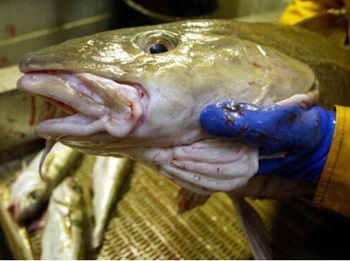 A trilateral agreement between the UK, European Union and Norway covers the total allowable catch (TAC) limits and management measures for jointly managed stocks in the Nort Sea. It has delivered quota increases for all six stocks – cod, haddock, whiting, plaice, saithe and herring. These are said to be worth an estimated £199m for Scots’ fishers, an increase of £68m compared to 2023 quotas. The government said this deal reflected positive advice from the International Council for the Exploration of the Sea, an influential group of marine scientists. It has delivered quota increases for all six stocks – cod, haddock, whiting, plaice, saithe and herring. Photos, more, >>click to read<< 14::56
A trilateral agreement between the UK, European Union and Norway covers the total allowable catch (TAC) limits and management measures for jointly managed stocks in the Nort Sea. It has delivered quota increases for all six stocks – cod, haddock, whiting, plaice, saithe and herring. These are said to be worth an estimated £199m for Scots’ fishers, an increase of £68m compared to 2023 quotas. The government said this deal reflected positive advice from the International Council for the Exploration of the Sea, an influential group of marine scientists. It has delivered quota increases for all six stocks – cod, haddock, whiting, plaice, saithe and herring. Photos, more, >>click to read<< 14::56
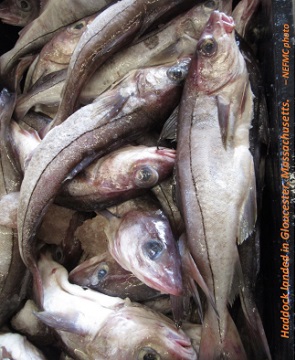
Haddock quotas for fishermen have been drastically cut. What does that mean for haddock eaters?
There is a haddock problem swimming around Gulf of Maine waters. But don’t blame the problem on fishermen catching too many haddock, say Maine commercial fishing advocates like Ben Martens, executive director of the Maine Coast Fishermen’s Association. In fact, they have been fishing in accordance with mandated quotas for decades, he said, regulatory measures that have returned the haddock stocks in the Gulf of Maine to sustainable levels. The problem, rather, is grounded in inaccurate accounting of the boom-and-bust cycles of haddock biomass, that is, how many fish are swimming in the Gulf of Maine at any given time. In April, the New England Fishery Management Council, a regional body that uses industry and scientific data to recommend quotas that restrict how many metric tons of regulated species Maine fishermen can haul in each year, announced a cut in haddock quotas. It represents an 80 percent reduction in allowable catch; the new season began on May 1. >click to read< 08:50
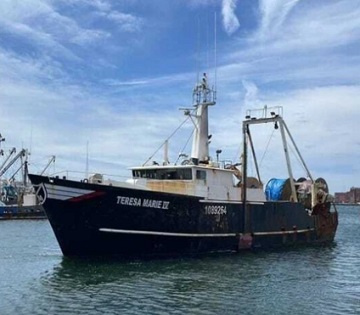
Environmental Regulations and Wind Turbines Are Backing New England Fishermen into a Corner
Just three weeks ago, Jerry Leeman was a commercial fishing captain in New England and a very successful one at that. Now, as executive director of the newly formed New England Fishermen Stewardship Association, he’s leading the charge against Biden administration policies that threaten the industry he loves, including overregulation and wind-turbine development in the Gulf of Maine. Leeman said that he and fellow New England fishermen have serious concerns about the accuracy of the NOAA data. Fish-population assessments fell to the wayside during the Covid years — 2021 and 2022 — and the data-collection process has not yet been corrected. “Whether you’re a lobsterman or a ground fisherman, a trend up and down the coast here is that nobody wants wind turbines placed in our environment. It’s going to mess up our stocks and our species. Not to mention it’s going to change the viability for generations to come in the fishing grounds,” Leeman said. Photos, >click to read< 07:51

Fishermen: Haddock limits to lead to shutdown
In two tows during a fishing trip in March, Gloucester fisherman Joe Orlando caught what could have been almost his entire allocation for Gulf of Maine haddock under catch limits proposed for fishing year 2023, which begins May 1. Orlando harvested 7,000 pounds in those two tows, about a half day’s worth of fishing, Jackie Odell, executive director of the Northeast Seafood Coalition pointed out to members of the New England Fishery Management Council, NOAA Fisheries and others in an email. His allocation for the upcoming fishing year is expected to be 8,000 pounds. >click to read< 07:57
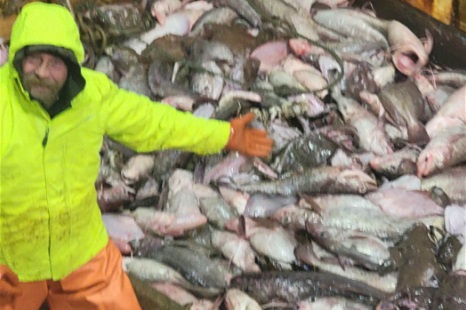
When things don’t add up. By Jerry Leeman
Sitting here towing along thinking back 20 years ago fishing in the Gulf of Maine. We used to land a lot of white hake. An average trip was always around 15k to 30k of hake 5k of monk tails on average. These days you worry of catching too many and you try to stay within the realm of your allowable catch because fish cost money to catch. Yes, even as crazy as that sounds boat quotas have been restricted from bad data collection to be so low, we have to purchase quota from other permits to maintain fishing. Then with these restrictions it puts a damper on markets. Imagine, markets that used to take in 200-500k of one specie a week then no longer are capable of taking in those fish because markets are not strong due to poor biomass data and allowable catches which have altered markets. >click to continue reading< 16:28
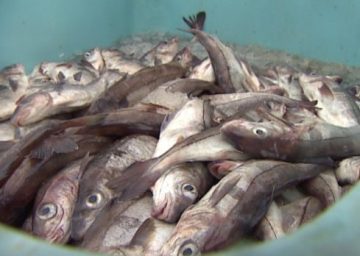
Canada, U.S. agree on quota cuts on Georges Bank, “significant concerns” with assessment methods
Canada and the United States have agreed to sharply reduce quotas for two key groundfish stocks on their shared Georges Bank fishing grounds off southern Nova Scotia. A joint transboundary government and industry panel is recommending a 25 per cent cut in haddock and a 32 per cent cut for cod in 2019. Co-chair Alain d’Entremont of Scotia Harvest Inc. in Nova Scotia, says there are concerns the huge numbers of haddock hatched in 2013 did not survive or were overestimated in the first place.,,, D’Entremont says predictions based on models have proven inaccurate when later checked against what actually occurred in the fishery. >click to read<08:55
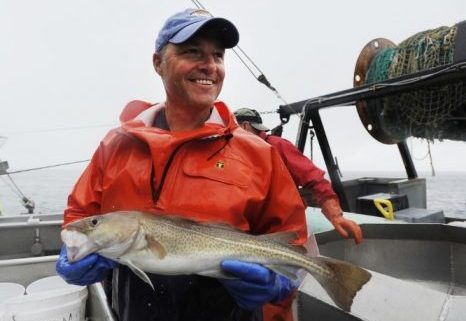
Study: Ocean noise may hinder fish mating
The party is noisy. The music and conversation drown out what you want to say. Welcome to the world of the cod, haddock and other fishwhere its considerably harder because its done in the dark, 160 feet below the ocean surface, where vital communication – essrtially “Here I am, over here!”- can be lost at the constant roar of ships passing overhead, An increasingly noisy ocean may mean fish are having a hard time finding one another to spawn and navigate, according to a new study by NOAA scientists and published last month in the online journal Scientific Reports by Nature. click here to read the story 10:28
Brexit Allows Us To Solve This Haddock Conservation Problem By Leaving The CFP
 It would be terribly wrong to compare the European Union to any of the mid-20th century unpleasantnesses in Europe like fascism and the rise of the Nazis but it is true that that peaceful economic arrangement has managed something that total war did not, the rationing of fish and chips in Britain. For it is actually true that said fish and chips never was rationed. Even when the Kreigsmarine was trying to sink everything larger than a canoe which issued from Britain’s ports we still had that haddock, cod and plaice. Give it 45 years of that ever closer European union and the bureaucratic management of the Common Fisheries Policy and we’re being told that we must indeed ration our consumption:,,, It’s all there in Garret Hardin’s Tragedy of the Commons. Where there’s an open access, what Hardin calls Marxian, resource, then that is just fine. If the regeneration capacity is greater than the annual demand, then all who want can have simply by taking. (See where this is going?) continue reading the article here 14:50
It would be terribly wrong to compare the European Union to any of the mid-20th century unpleasantnesses in Europe like fascism and the rise of the Nazis but it is true that that peaceful economic arrangement has managed something that total war did not, the rationing of fish and chips in Britain. For it is actually true that said fish and chips never was rationed. Even when the Kreigsmarine was trying to sink everything larger than a canoe which issued from Britain’s ports we still had that haddock, cod and plaice. Give it 45 years of that ever closer European union and the bureaucratic management of the Common Fisheries Policy and we’re being told that we must indeed ration our consumption:,,, It’s all there in Garret Hardin’s Tragedy of the Commons. Where there’s an open access, what Hardin calls Marxian, resource, then that is just fine. If the regeneration capacity is greater than the annual demand, then all who want can have simply by taking. (See where this is going?) continue reading the article here 14:50
Haddock Boom! The number of haddock believed to have survived their first year off N.S. is “extraordinary,” says biologist
 Exactly how many of the haddock that hatched in 2013 are still swimming off the coast of southern Nova Scotia is not certain, but researchers agree the numbers are potentially massive. Biologist Monica Finley recently completed a population assessment for the southern Scotian Shelf and Bay of Fundy. She estimates 264 million haddock were hatched there in 2013 and survived their first year, making it an “extraordinary” year-class. “This 2013 year-class is five times higher than the next highest on record since 1985,” said Finley, who works at a Department of Fisheries and Oceans research facility in St. Andrews, N.B. Her report predicts 100,000 metric tonnes of haddock will reach adulthood in 2017 and 2018. On Georges Bank, the population is predicted to be even bigger, with Canadian and American scientists estimating the 2013 hatch at 1.3 billion fish. Read the story here 18:36
Exactly how many of the haddock that hatched in 2013 are still swimming off the coast of southern Nova Scotia is not certain, but researchers agree the numbers are potentially massive. Biologist Monica Finley recently completed a population assessment for the southern Scotian Shelf and Bay of Fundy. She estimates 264 million haddock were hatched there in 2013 and survived their first year, making it an “extraordinary” year-class. “This 2013 year-class is five times higher than the next highest on record since 1985,” said Finley, who works at a Department of Fisheries and Oceans research facility in St. Andrews, N.B. Her report predicts 100,000 metric tonnes of haddock will reach adulthood in 2017 and 2018. On Georges Bank, the population is predicted to be even bigger, with Canadian and American scientists estimating the 2013 hatch at 1.3 billion fish. Read the story here 18:36
New England: Fleet could see haddock quota double
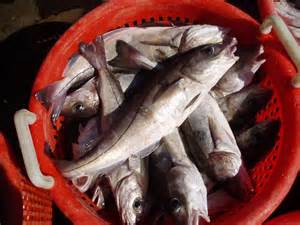 The annual catch limits for Gulf of Maine cod will increase slightly in 2016, while the quota for haddock will more than double if recommendations passed this week by the New England Fishery Management Council are approved by NOAA Fisheries. One year after slashing total cod quotas by more than 75 percent to 386 metric tons, the council voted at its three-day meeting in Portland, Maine, to raise the total cod annual catch limit (ACL) to about 440 metric tons, with 280 metric tons designated for the commercial fishing industry in each of the next three fishing seasons. Read the article here 08:20:38
The annual catch limits for Gulf of Maine cod will increase slightly in 2016, while the quota for haddock will more than double if recommendations passed this week by the New England Fishery Management Council are approved by NOAA Fisheries. One year after slashing total cod quotas by more than 75 percent to 386 metric tons, the council voted at its three-day meeting in Portland, Maine, to raise the total cod annual catch limit (ACL) to about 440 metric tons, with 280 metric tons designated for the commercial fishing industry in each of the next three fishing seasons. Read the article here 08:20:38
2014 study shows haddock is booming and cod remains in decline in the northeast
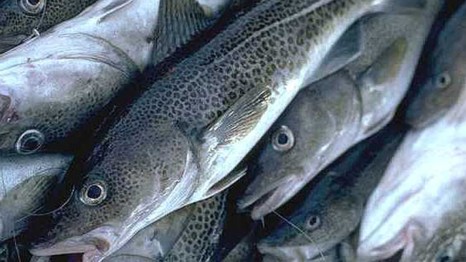 U.S. government scientists reporting on fish stocks off New England are reaching the same conclusions as their Canadian counterparts who have found that haddock is booming and cod remains in decline in the northeast. On Monday, the Northeast Fisheries Science Centre at Woods Hole, Massachusettes released an assessment of 20 northeast ground fish stocks from 2014 surveys. “The rapid increase in haddock, redfish, pollock and white hake contrasts sharply with the decline of cod and the flatfish species,” the report states. Read the rest here 09:13
U.S. government scientists reporting on fish stocks off New England are reaching the same conclusions as their Canadian counterparts who have found that haddock is booming and cod remains in decline in the northeast. On Monday, the Northeast Fisheries Science Centre at Woods Hole, Massachusettes released an assessment of 20 northeast ground fish stocks from 2014 surveys. “The rapid increase in haddock, redfish, pollock and white hake contrasts sharply with the decline of cod and the flatfish species,” the report states. Read the rest here 09:13
Groundfishing aground? The rise and fall of Maine’s offshore fishing industry – Lobster catch keeps going up, up, up
 “I was here from 1989-1996, when we opened up at 4 a.m. and sometimes ran until midnight,” says General Manager Bert Jongerden,,, Now, Portland is a distant third behind New Bedford and Gloucester. The reasons are many, but Jongerden says the Portland Fish Exchange’s fortunes very much have mirrored the rise and fall of New England’s offshore fishing industry over the past 30 years. Read the rest here 11:32
“I was here from 1989-1996, when we opened up at 4 a.m. and sometimes ran until midnight,” says General Manager Bert Jongerden,,, Now, Portland is a distant third behind New Bedford and Gloucester. The reasons are many, but Jongerden says the Portland Fish Exchange’s fortunes very much have mirrored the rise and fall of New England’s offshore fishing industry over the past 30 years. Read the rest here 11:32
Scott Lang – Northeast Fisheries Science Center cannot ignore other fishery data
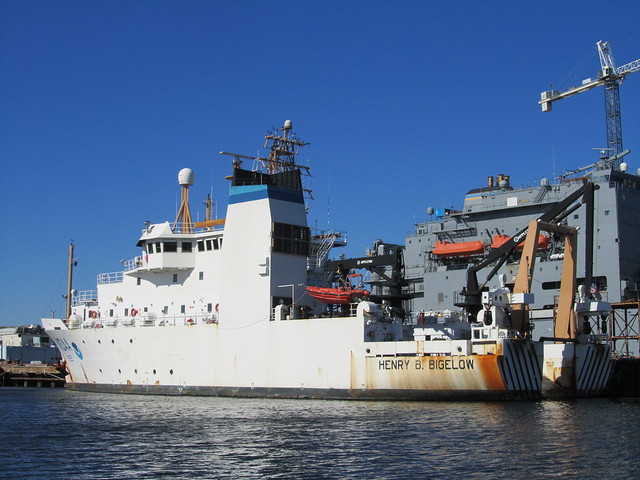 From the article: Prior to the June meeting, NEFSC hosted an “empirical approach” TRAC Yellowtail Benchmark meeting in April to “evaluate all relevant data sources with respect to their support for alternative hypotheses on stock status and . . . their directional impact on catch advice.” With NEFSC pledging that the “empirical approach” meeting would be new, innovative, inclusive, and transparent, there was much hype leading up to the April “Empirical Approach” meeting. NEFSC has been criticized in the past for a lack of transparency,,, Read more here 17:41
From the article: Prior to the June meeting, NEFSC hosted an “empirical approach” TRAC Yellowtail Benchmark meeting in April to “evaluate all relevant data sources with respect to their support for alternative hypotheses on stock status and . . . their directional impact on catch advice.” With NEFSC pledging that the “empirical approach” meeting would be new, innovative, inclusive, and transparent, there was much hype leading up to the April “Empirical Approach” meeting. NEFSC has been criticized in the past for a lack of transparency,,, Read more here 17:41
Bountiful haddock fishing in Nova Scotia – Haddock boom could sustain industry for six to seven years
LOWER WEST PUBNICO, N.S.The Poseidon Princess steamed through the storm toward the southwest shore of Nova Scotia at eight knots, bringing home 39,000 kilograms of haddock caught hours before on Georges Bank. The wind was strong, the waves high and “a lot of stuff [was] flying around” inside the 65-foot boat during the difficult 14-hour journey, said captain Martin d’Entremont. But the mood was almost giddy – because of the record numbers of haddock that had grown big enough to catch on Georges Bank. Read more@globeandmail 22:24
In Pictures: Record-sized 2010 year-class creates haddock boom could sustain industry for six to seven years. Photo gallery @globeandmail.com 21:05
Conservation Law Foundation and Earthjustice file lawsuits in federal district court challenging NMFS
![]()
 Suits challenge plans to open no-fishing zones and to boost catch limits. Attorneys from Conservation Law Foundation and Earthjustice filed a pair of lawsuits today in the federal district court challenging recent decisions by the National Marine Fisheries Service regarding New England groundfish. continued
Suits challenge plans to open no-fishing zones and to boost catch limits. Attorneys from Conservation Law Foundation and Earthjustice filed a pair of lawsuits today in the federal district court challenging recent decisions by the National Marine Fisheries Service regarding New England groundfish. continued
Summary of April 16-17 NEFMC Groundfish Committee Meeting
 April 25, 2013 — The New England Fishery Management Council’s (NEFMC) Groundfish Committee met on Tuesday, April 16, and Wednesday, April 17, to consider recommendations from the Council’s Closed Area Technical Team (CATT) on closed areas in the Gulf of Maine and Georges Bank. Plenty of audio in this summary, and there are plenty of reasons to question the CATT’s proposals. continued
April 25, 2013 — The New England Fishery Management Council’s (NEFMC) Groundfish Committee met on Tuesday, April 16, and Wednesday, April 17, to consider recommendations from the Council’s Closed Area Technical Team (CATT) on closed areas in the Gulf of Maine and Georges Bank. Plenty of audio in this summary, and there are plenty of reasons to question the CATT’s proposals. continued
NOAA eyes easing redfish, dogfish rules
”Several o f the new measures were conceived by fishermen, and others are the product of collaboration between fishermen, researchers and our staff,” Bullard, based in the Gloucester office in Blackburn Industrial Park, said in a prepared statement. “By working together and thinking creatively, we can find fishing opportunities even in these challenging times.” Nils Stolpe wrote that “there are approximately a million metric tons – that’s 2.2 billion pounds – of three species of catchable and marketable fish ‘available’ off our Northeast. “These three species – Acadian redfish, spiny dogfish and haddock – could sustainably support the entire out-of-work groundfish industry, and then some.” http://www.gloucestertimes.com/local/x2120612513/NOAA-eyes-easing-redfish-dogfish-rules
f the new measures were conceived by fishermen, and others are the product of collaboration between fishermen, researchers and our staff,” Bullard, based in the Gloucester office in Blackburn Industrial Park, said in a prepared statement. “By working together and thinking creatively, we can find fishing opportunities even in these challenging times.” Nils Stolpe wrote that “there are approximately a million metric tons – that’s 2.2 billion pounds – of three species of catchable and marketable fish ‘available’ off our Northeast. “These three species – Acadian redfish, spiny dogfish and haddock – could sustainably support the entire out-of-work groundfish industry, and then some.” http://www.gloucestertimes.com/local/x2120612513/NOAA-eyes-easing-redfish-dogfish-rules

































